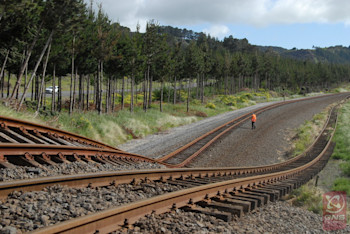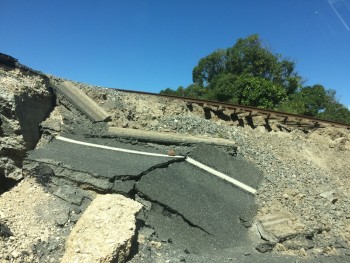
Kaikōura two years on: How prepared are Kiwis?
It was a scary time, and many New Zealanders rushed to update their emergency preparedness plans. But how can we make sure people stay prepared?
Today marks two years since the Kaikōura earthquake – the M7.8 shake that caused widespread damage, closed major roads, severely damaged railway lines and left small towns in the upper South Island without water or a working sewerage system. In Wellington, schools and businesses were closed, and a number of buildings were damaged beyond repair. And the effects on wellbeing – of people and of communities – were substantial.
Major events do act as a short-term trigger for New Zealanders to take action, according to Dr Julia Becker from GNS Science’s social science team.
“We know we have about a two-year window of opportunity after a major event to spur people into taking action – after that, their interest starts to wane,” Dr Becker says.
“We’re exploring what the priorities should be to motivate people during that time. Since it’s two years since Kaikōura, we’re looking at how to keep up that momentum."
A recent survey by Canterbury’s Civil Defence and Emergency Management group showed that in 2011, 79% of Christchurch households had enough stored water for at least three days – by 2017, that had dropped to 47%.
Dr Becker also suggests that Christchurch’s struggles in the aftermath of the 2010 and 2011 quakes may not have moved people in other regions to prepare themselves.
“We were interested to see that people in Kaikōura or Wellington were not necessarily more prepared as a result of the Christchurch quakes,” she says.
“Everyone looks at Christchurch now and thinks, that’s what an earthquake looks like, that’s how it happens. But the impacts of the Kaikōura earthquake played out completely differently. There are some things you can do to build resilience, but you need to be flexible.”
In urban areas, there are real causes for concern. Researchers from GNS Science and Massey University studied apartment dwellers in Wellington and found most buildings have very little storage for things like drinking water and emergency supplies.
“In terms of community, we’ve found people who own their own apartments are better prepared. They are more likely to know their building’s emergency plan, be active in their body corporate and know their neighbours. But renters are far less sure of what to do,” Dr Becker says.
On this anniversary, now’s a great time to look again at your household’s emergency plan, check your food stocks and ensure you have enough water stored. Check out Get Thru and EQC to find out what you can do to be more prepared in the event of an emergency or natural disaster.
Download our app, which will keep you up to date with all the seismic activity in our shaky islands. And don’t lose the momentum - make sure your family, friends and neighbours are prepared too.
We're giving you an update each day this week. Read our previous stories here:
Kaikōura two years on: The changed landscape
Kaikōura two years on: Playing the long game with landslides



